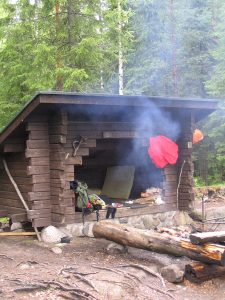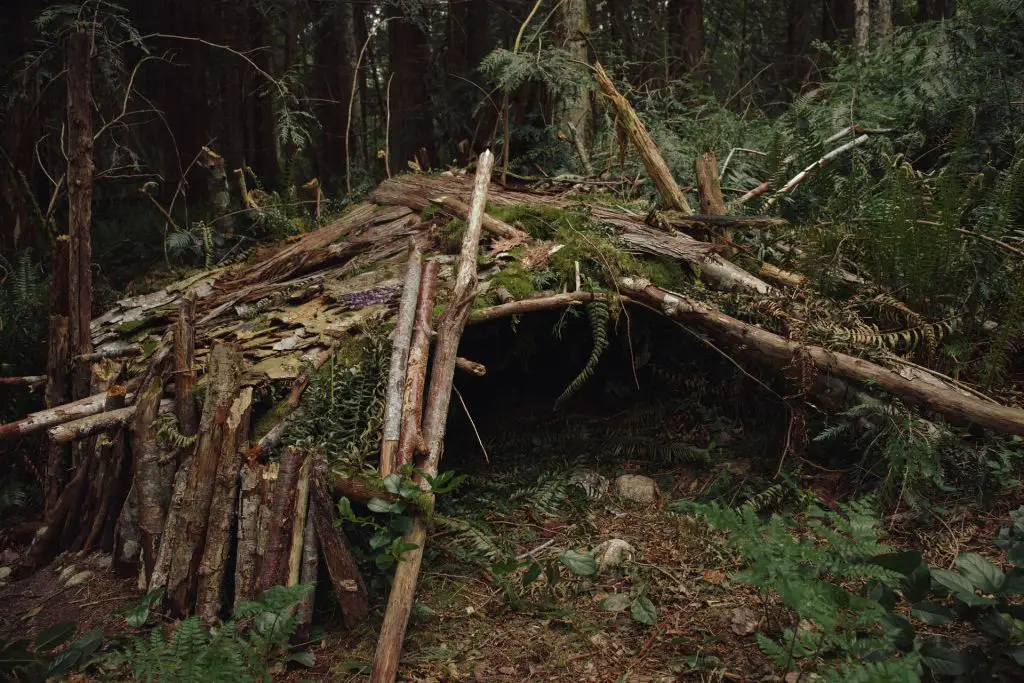Imagine you had to be forced out of your current location due to a crisis or disaster, is there another shelter option you can think of? For a survivalist or prepper who wants to get through difficult times, learning how to build a long-term survival shelter is a significant skill. Having a good knowledge of shelter and survival is a great way to keep you and your family safe.
In this article, you will be looking at the different shelter options available to you in emergencies. Furthermore, the factors to consider while testing a building design and location are mentioned.
What are the Long-Term Survival Shelter Options Available?
Generally, there are about 5 shelter options available to survivalists or preppers, depending on the area’s resources. Interestingly, they are all useful when you need them; however, you should choose what you think is most appropriate.
Lean-To
In one way, the Lean-To option is the commonest long-term shelter survival option available to preppers. It is the most preferred because of the ease of building and the adequate heat produced from a nearby fire. It is quite effective in all kinds of survival conditions.
As the name Lean-To implies, it is a shelter built in between two trees. It requires placing a beam between these trees with the aid of their natural wedges. Further, with long, thin pieces of wood, set up the base/floor.
Tarps
Another incredible option to build a survival shelter in case of emergencies is using Tarps. On several occasions, Tarps have been useful for outdoor purposes; hence, there is a great possibility it is useful for long-term survival. First, you need a multi-purpose waterproof tarp that will not only cover items but also provide long-lasting strength.
With the tarp, build foundational structures and attach them to form a great shelter. It can be constructed further to fit into style for your survival. In building a shelter with this piece of material, there is a maximization of dryness and retention of heat for safety.
Quinzhee
If you are in a snowy environment, an available option to build a long-term survival shelter is the Quinzhee. It is quite surprising that snow is a good insulator, and building one from the middle provides enough shelter benefits. While you build a pile of snow, make sure you consider three things: where you will lie down, a space to keep gears, and; where to add pines for a vertical structure.
When building a Quinzhee shelter, you should be aware that you wouldn’t be introducing extra heat via fire or fuel. More importantly, please make sure the walls are thick enough to prevent them from collapsing.
Find out about
| How Should A Watch Fit? |
| Gray Man Theory: How to Be a Gray Man |
| How To Introduce Kids To Survival In The Great Outdoors |
Teepee
For many centuries, the Teepee method of survival shelter has been effective. It is quite traditional since the resources needed are in the environment. While it offers you maximum protection, it also guides you to safety.
Teepee involves making use of 3 long sticks and then smaller ones to form a pyramid shelter. At first, it doesn’t look sturdy, but investing in the foundation could make it last for as long as possible. Then, make use of shrubs or vegetation to provide covering and a long stick for the floor.
With this method, you could provide heat by starting a fire with debris or dry leaves. It is important to ensure the opening is close to the source of the fire.
The Alternatives
If you are not interested in the options above, the alternatives are open to trying depending on the resources around you. Here, it means devising different methods to build what would protect and keep you safe.
For instance, you could make use of overhanging cliffs or caves to provide long-term shelter for as long as you need it. Often, the alternatives shouldn’t cost you a lot, but you might need to invest in items like paracord, firestarter, etc.
Find more about shelters HERE
What are the Factors to Consider Before Choosing a Location for Shelter?
While it looks easy to choose a long-term survival shelter option, you will need to pay attention to a couple of things before anything at all. Check the factors below and carefully pick an option that will guarantee your survival over a long time.
1. Food and Water Sources
The most important thing you should think about when setting up a location for a survival shelter is the availability of food and water sources. You don’t want to be stuck in a place where there is nothing to aid your survival. It would be best if you built a shelter with good proximity to fruits or edibles and water for drinking and cleaning.
2. Waste Management
Another factor that most people don’t often consider when choosing a location to survive is waste management. On the contrary, it is important because it determines health safety. If you cannot build a good structure or improvise on how to dispose of waste, then it is in little or no time that it endangers your health.
For instance, you could dig a hole for human waste many meters away from the shelter but more than 100 feet away from the water source.
3. Fuel
More importantly, a source of fuel is equally essential. Unlike your home, where heat is provided naturally, you need fuel here to survive. A good source of fuel is dry trees or leaves capable of holding fire and providing warmth. Thus, being close to a source is consequential to survival.
Other factors include bathroom areas, defense, etc.
Find the complete step-by-step survival guides on our website.
Key Construction Techniques
Insulation and Ventilation
Proper insulation using natural materials is crucial. Ventilation is equally important to prevent condensation and maintain a healthy environment inside the shelter.
Reinforcement Techniques
Learn how to strengthen your shelter against natural elements using intertwining branches, mud, or clay as sealants.
Essential Considerations
Seasonal Variations
Understand how different seasons affect shelter needs and how to adapt to various weather conditions.
Long-Term Maintenance
Regular maintenance is key to the longevity of your shelter. Learn to inspect, repair, and reinforce your structure over time.
Environmental Impact
We emphasize eco-friendly practices. Use renewable materials and minimize disturbance to the surrounding nature.
Advanced Survival Skills
Improvised Tools
Creating tools from the environment can be a game-changer. We’ll guide you on how to fashion necessary tools using natural resources.
Integrating Shelter with Survival Priorities
Discover how to strategically select shelter locations considering water, food sources, and rescue visibility.
 Conclusion
Conclusion
For some reason, you are out of place, and you need to survive in a location; building a shelter is the ideal thing to do. Unfortunately, not many know how to build a long-term survival shelter, which is why this guide is useful. Go through the various options available and check with the factors responsible for sustainability in interest areas to set up.
Don’t forget to comment to tell us your views.


 Conclusion
Conclusion